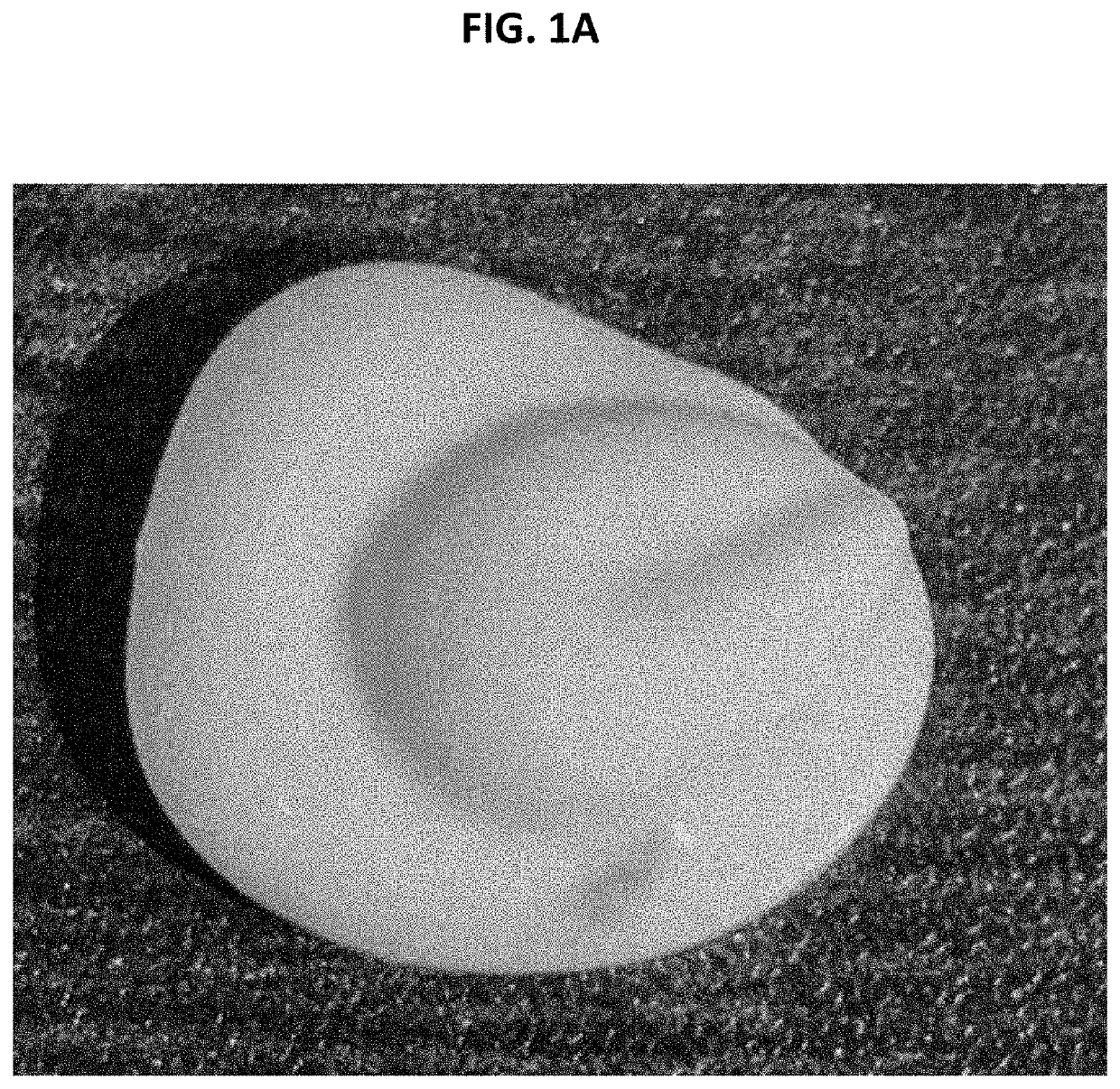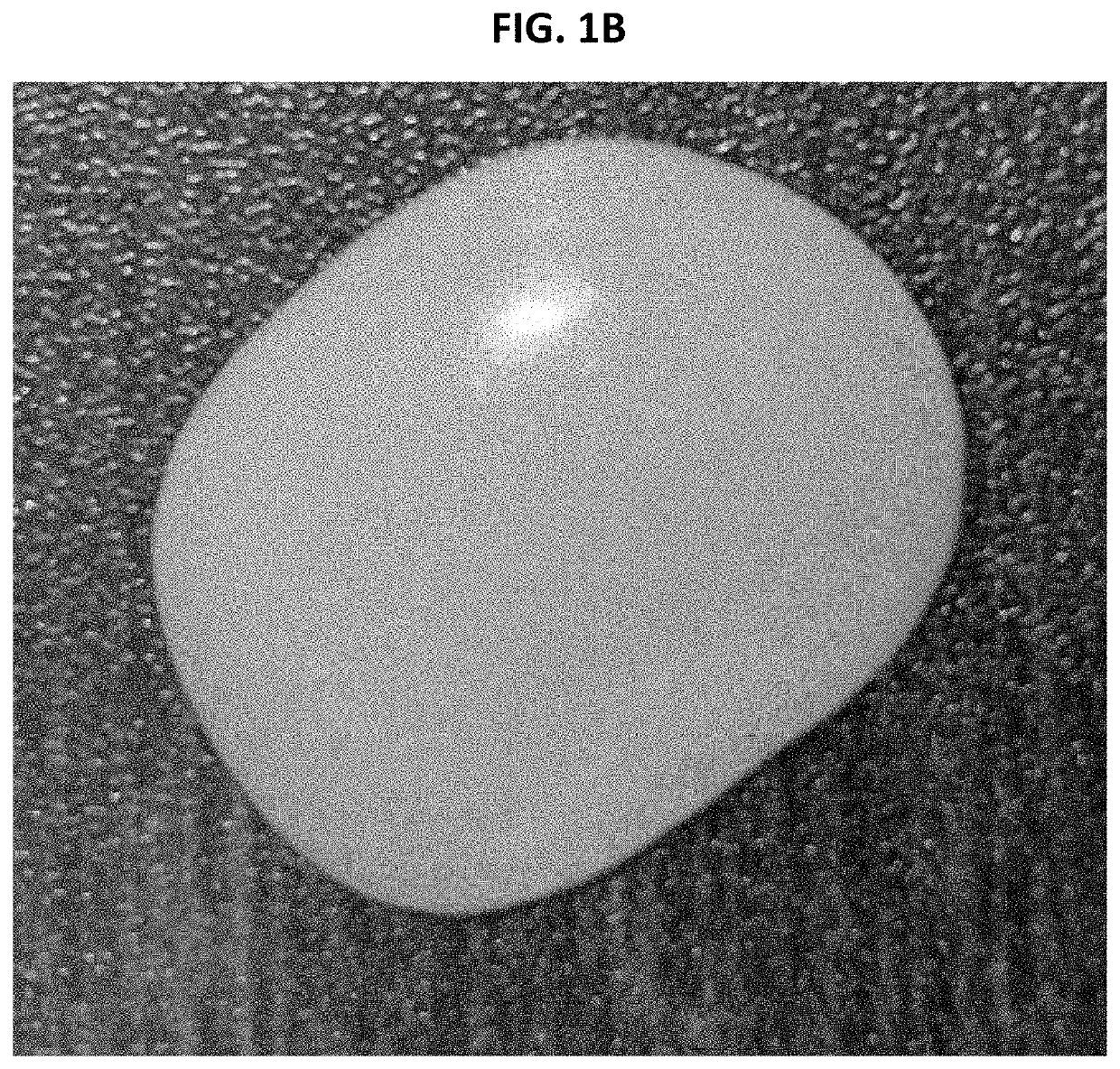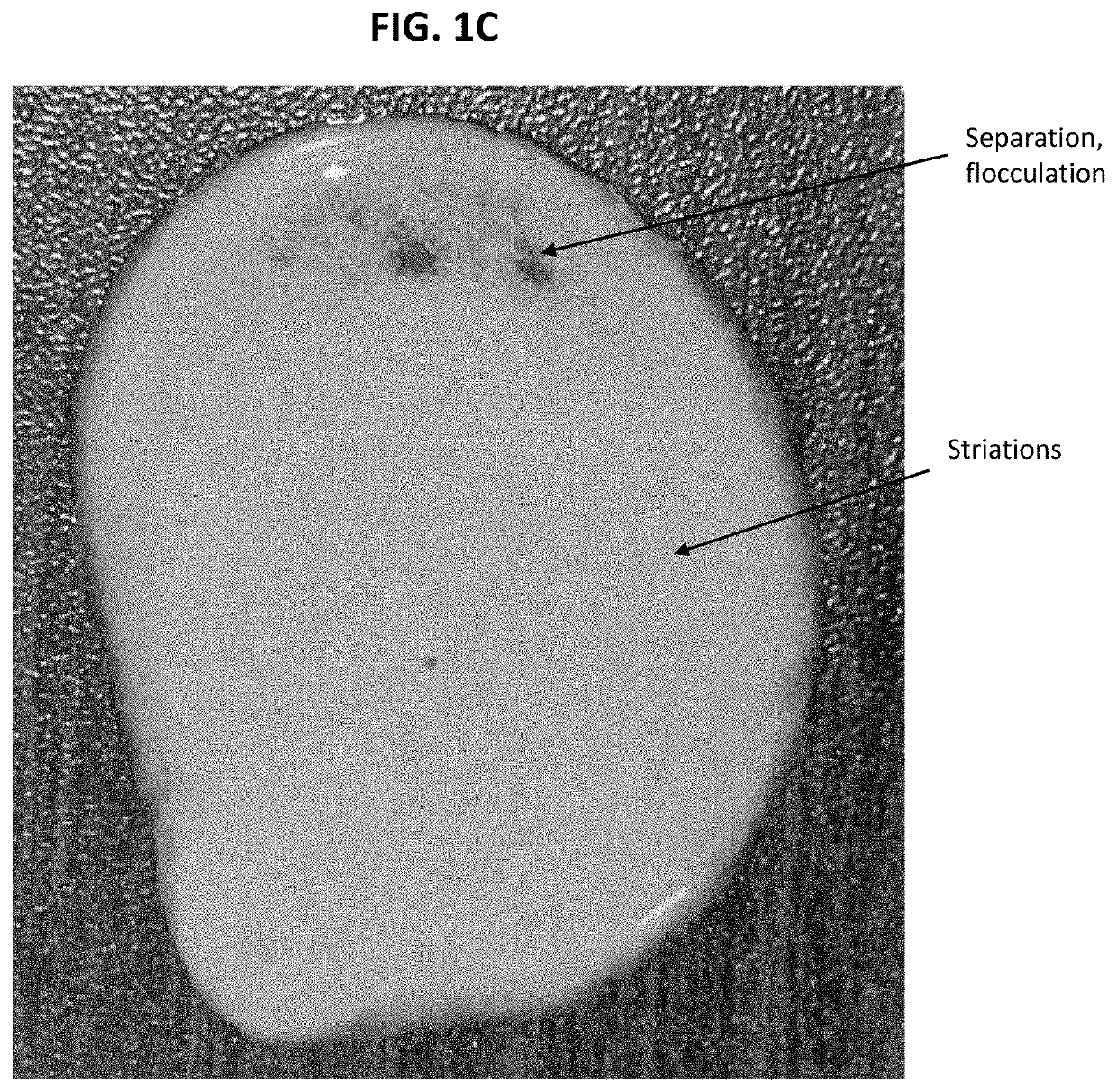Stable organic cannabinoid oil blend formulations
a cannabinoid oil and blend technology, applied in the direction of pharmaceutical delivery mechanism, oil/fat/waxes non-active ingredients, aerosol delivery, etc., can solve the problem of few commercially available cbd lotions made with a high proportion of organic ingredients, and achieve the effect of maintaining thermostability and consistency, encouraging desirable properties of lotions, and encouraging desirable properties
- Summary
- Abstract
- Description
- Claims
- Application Information
AI Technical Summary
Benefits of technology
Problems solved by technology
Method used
Image
Examples
example 1
ic Oil Blend Formulation Process Via Sonication
[0214]This example describes the production of therapeutic oil blends that can be used in later formulating the oil-in-water emulsions of the present disclosure. In this example, CBD was used. A therapeutic oil blend comprising Cannabidiol, eugenol, menthol, menthone, and d-limonene was prepared using an ultrasonic homogenizer (1800 W, 19-22 kHz). The cannabidiol-related cannabinoid was provided in the form of a high purity, high concentration cannabidiol containing hemp oil. The hemp oil was heated to 60° C. and sonicated for two hours at maximum power, alternating between sonication and rest periods at every 10 seconds. To this was added chilled eugenol during a further sonication cycle of ten minutes alternating between sonication and rest time. To this mixture was added chilled d-limonene during a further sonication cycle of fifteen minutes alternating between sonication and rest time. Camphor, eucalyptol, a-pinene, b-pinene, b-myrc...
example 2
ic Oil Blend Formulation Process Via Sonication
[0215]Additional cannabinoids will be formulated according to Example 1 to produce alternative therapeutic oil blends. For example, a therapeutic oil blend comprising a cannabidiol-related cannabinoid, eugenol, menthol, menthone, and d-limonene is prepared using an ultrasonic homogenizer (1800 W, 19-22 kHz). The cannabidiol-related cannabinoid is provided in the form of a high purity, high concentration cannabidiol-related cannabinoid containing hemp oil. The hemp oil is heated to 60° C. and sonicated for two hours at maximum power, alternating between sonication and rest periods at every 10 seconds. To this is added chilled eugenol during a further sonication cycle of ten minutes alternating between sonication and rest time. To this mixture is added chilled d-limonene during a further sonication cycle of fifteen minutes alternating between sonication and rest time. Remaining terpenes are mixed at room temperature and added during anoth...
example 3
ive Compositions of the Present Disclosure
[0216]The following lotions and balms are exemplary compositions of the present disclosure having the desired characteristics, including thermostability and consistency.
Preparation of Exemplary Lotions
[0217]Lotions of the present disclosure are prepared according to the following general progression: water phase→emsulfiers→oil phase→ethanol phase. Throughout the formulation process, the temperature of the composition is maintained below 35° C. (e.g., below 30° C.). Cooling was performed by jacketed cooling or water bath. The formulation process of lotions of some embodiments of the present disclosure is as follows:
[0218]1.) Combined the ingredients in the water phase together and slowly mixed with a rotor stator homogenizer until combined.
[0219]2.) Added in the saponin and slowly mixed until fully dissolved.
[0220]3.) With the rotor stator homogenizer on max power (6000 krpm-15 krpm), slowly added in the sodium alginate and the guar gum toget...
PUM
| Property | Measurement | Unit |
|---|---|---|
| particle size | aaaaa | aaaaa |
| temperature | aaaaa | aaaaa |
| weight percent | aaaaa | aaaaa |
Abstract
Description
Claims
Application Information
 Login to View More
Login to View More - R&D
- Intellectual Property
- Life Sciences
- Materials
- Tech Scout
- Unparalleled Data Quality
- Higher Quality Content
- 60% Fewer Hallucinations
Browse by: Latest US Patents, China's latest patents, Technical Efficacy Thesaurus, Application Domain, Technology Topic, Popular Technical Reports.
© 2025 PatSnap. All rights reserved.Legal|Privacy policy|Modern Slavery Act Transparency Statement|Sitemap|About US| Contact US: help@patsnap.com



